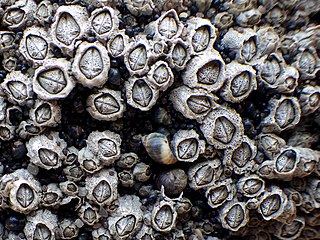
Ptychographa is a genus of lichenized fungi in the family Xylographaceae. It is a monotypic genus, containing the single species Ptychographa xylographoides. Both the species and genus were described as new in 1874 by Finnish botanist William Nylander.
Norrlinia is a genus of two species of fungi in the family Verrucariaceae. The genus was circumscribed by Ferdinand Theissen and Hans Sydow in 1918. The genus name honours the Finnish botanist Johan Petter Norrlin. Both species are lichenicolous, meaning they parasitise lichens. The host of both fungi is the foliose genus Peltigera.

Psoroglaena is a genus of lichen-forming fungi in the family Verrucariaceae. The genus was circumscribed by Johann Müller Argoviensis in 1891, with Psoroglaena cubensis assigned as the type species.
Cercidospora is a genus of fungi in the class Dothideomycetes. The relationship of this taxon to other taxa within the class is unknown. The genus was first described by Gustav Wilhelm Körber in 1865; it is synonymous with the name Prolisea described by Frederick Edward Clements in 1931.

Collemopsidium is a genus of fungi in the family Xanthopyreniaceae. Some members of this genus are marine species, and described as "borderline lichens" or "algicolous" fungi. The genus was circumscribed by Finnish botanist William Nylander in 1881.

Candelaria is a genus of lichen-forming fungi in the family Candelariaceae. The genus was circumscribed by Italian lichenologist Abramo Bartolommeo Massalongo in 1852.

Lecanora polytropa, commonly known as the granite-speck rim lichen, is a species of saxicolous lichen in the family Parmeliaceae. A small, inconspicuous species that grows in the cracks of rock surfaces, it has a cosmopolitan distribution and has been recorded on all continents, including Antarctica.

Parmotrema arnoldii, commonly known as the powdered ruffle lichen, is a widely distributed species of lichen in the family Parmeliaceae. It has been recorded from Africa, Asia, Europe, Oceania, Macaronesia, and North and South America.

Stereocaulon alpinum is a species of fungus belonging to the family Stereocaulaceae. It is similar to Stereocaulon paschale but differs from it in containing cyanobacteria of the genus Nostoc while S. paschale contains cyanobacteria of the genus Stigonema, which have a darker colour than Nostoc.

Hymenelia is a genus of lichen-forming fungi belonging to the family Hymeneliaceae.

Xylographaceae is a family of lichen-forming fungi in the order Baeomycetales. It contains four genera and 25 species.

Polycoccum is a genus of lichenicolous fungi in the family Polycoccaceae. It has about 60 species.
Cercidospora thamnoliicola is a species of lichenicolous fungus in the genus Cercidospora but it has not been assigned to a family. It is known to parasitise the lichen Thamnolia vermicularis in Iceland but it is rare there. The species was first formally described by mycologist Per G. Ihlen in 1995, from specimens growing on Thamnolia vermicularis in Norway.
Cercidospora stereocaulorum is a species of lichenicolous fungus in the genus Cercidospora but it has not been assigned to a family. It is known to parasitise lichens of the genus Stereocaulon.
Cercidospora soror is a species of lichenicolous fungus in the genus Cercidospora but it has not been assigned to a family. It was discovered growing on Arthrorhaphis citrinella in Austria but has since then also been reported from Greenland, where it infects Arthrorhaphis alpina and Arthrorhaphis citrinella.

Solorina crocea, commonly known as the orange chocolate chip lichen, is a species of terricolous (ground-dwelling) and foliose (leafy) lichen in the family Peltigeraceae. The lichen, which was first formally described by Carl Linnaeus in 1753, has an arctic–alpine and circumpolar distribution and occurs in Asia, Europe, North America, and New Zealand. It generally grows on the bare ground in sandy soils, often in moist soil near snow patches or seepage areas. Although several forms and varieties of the lichen have been proposed in its history, these are not considered to have any independent taxonomic significance.
Cercidospora macrospora is a species of lichenicolous fungus in the genus Cercidospora but it has not been assigned to a family. It is known from the northern hemisphere.










